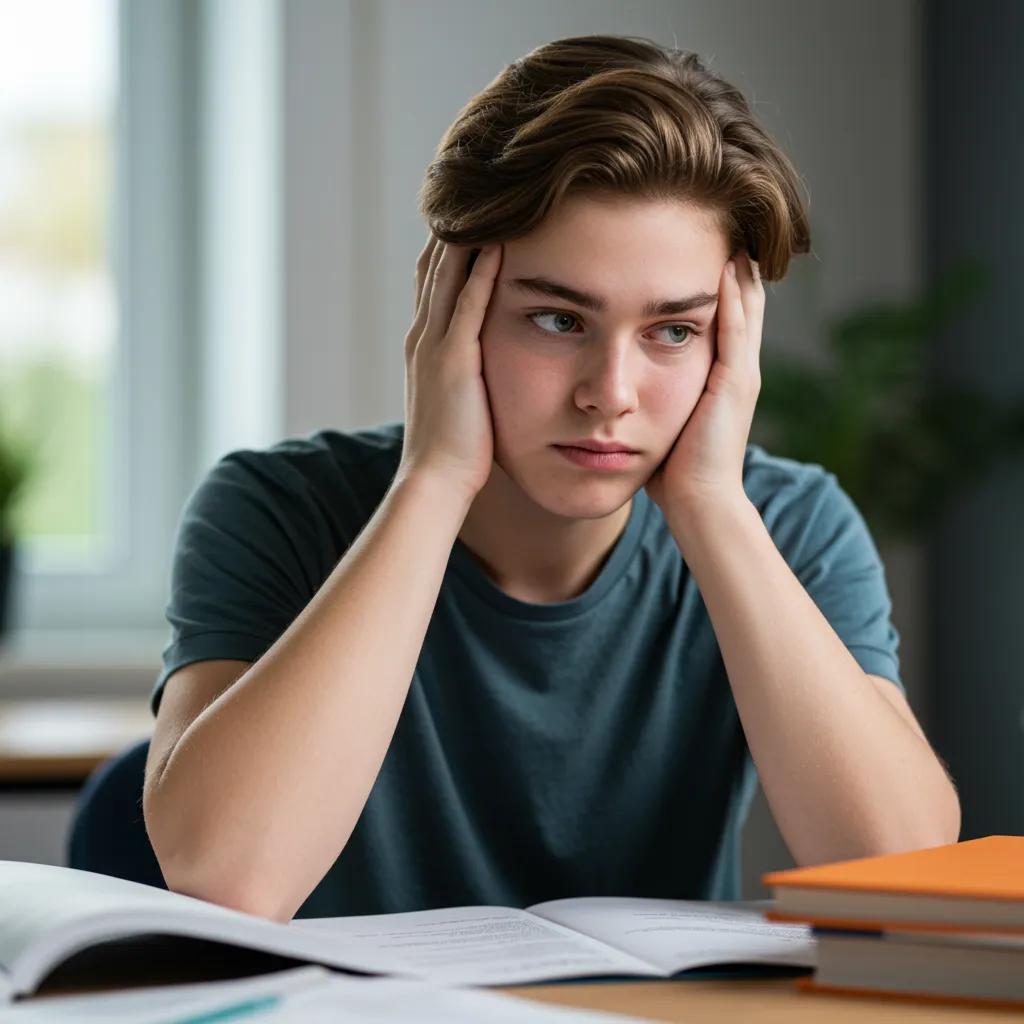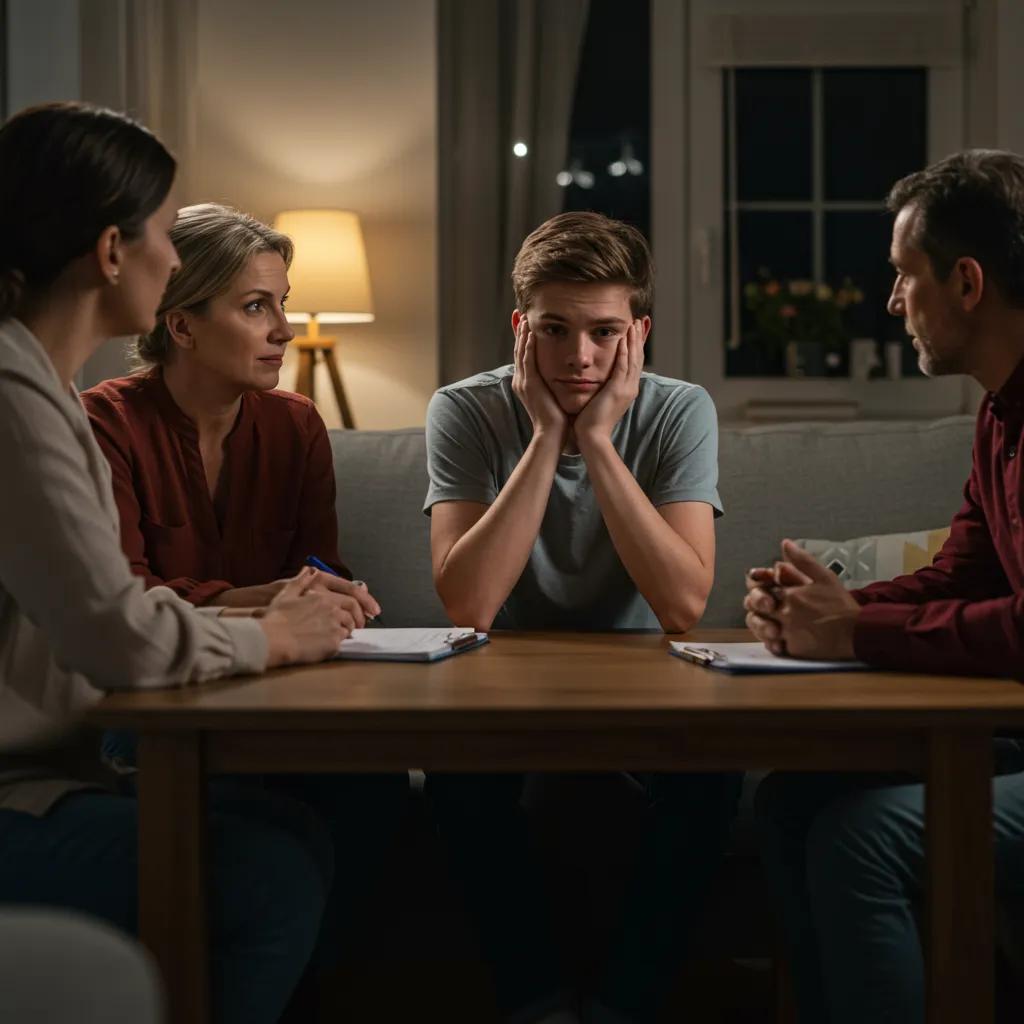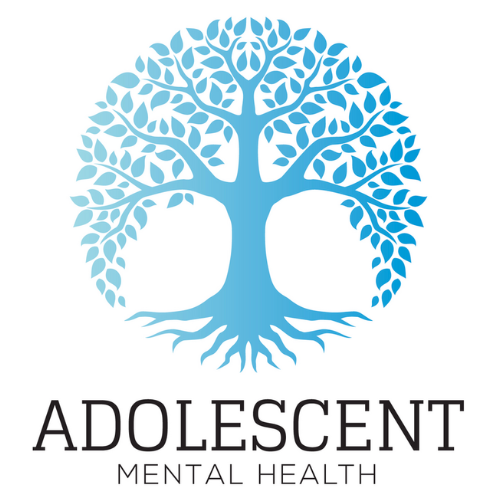Understanding Teen Anxiety in Laguna Hills: How Families Can Help and Access Virtual Mental Health Support
Anxiety in teenagers is a common but serious emotional state that can interfere with school, relationships, and daily routines, and Laguna Hills families need clear, practical steps to recognize and respond. This article explains what teen anxiety looks like, why it develops, and what parents can do at home to reduce distress while preserving connection and functioning. Readers will learn symptom categories, common local triggers such as academic pressure and social media, and step-by-step communication and resilience-building strategies that parents can apply immediately. The piece also maps evidence-based treatment options, compares traditional care with virtual models, and describes how a Virtual Intensive Outpatient Program (IOP) for Teens can fit into a care plan. Practical lists, quick scripts for conversations, and EAV-style comparison tables are included to help Laguna Hills families triage symptoms, decide when to escalate to professional care, and understand next steps for enrollment and insurance verification. Throughout, terms like CBT, DBT, telehealth, and progress monitoring are used to connect concepts and improve clarity.
What Are the Common Symptoms of Anxiety in Teens?

Anxiety in adolescents is excessive worry or fear that disrupts everyday life, driven by heightened stress responses and cognitive patterns that magnify perceived threats. This mechanism creates physical arousal, persistent negative thoughts, and avoidance behaviors that together reduce a teen’s ability to function at school and home. Recognizing clustered symptoms across physical, emotional, and behavioral domains helps parents decide whether to monitor, intervene at home, or seek professional care. Below are grouped signs designed for quick recognition and initial triage.
The most common symptoms fall into three categories:
- Physical signs like headaches, stomachaches, muscle tension, and sleep disruption.
- Emotional indicators including persistent worry, panic, and excessive fear.
- Behavioral changes such as social withdrawal, school avoidance, and new safety rituals.
These categories allow parents to spot patterns rather than isolated incidents and guide the next steps toward support.
What Physical Signs Indicate Anxiety in Adolescents?
Physical symptoms reflect the body’s stress response and often appear before emotional symptoms are clearly expressed, with sleep disturbance, appetite changes, headaches, and stomach pain among typical indicators. These somatic signs occur because chronic worry activates sympathetic arousal, which can disrupt sleep architecture and digestive function, reducing resilience. Parents should track frequency and timing of symptoms and consult a pediatrician if symptoms persist or worsen, since medical causes must be ruled out. Early attention to sleep hygiene and relaxation exercises can reduce physical arousal and improve daily functioning.
How Do Emotional Changes Manifest in Anxious Teens?
Emotional manifestations of anxiety include persistent worry about school performance, relationships, and future events, along with heightened irritability and mood swings that affect family interactions. These emotional patterns stem from cognitive distortions—overestimating threat and underestimating coping ability—which CBT directly addresses. When emotional symptoms begin to impair enjoyment, concentration, or social connections, they warrant more structured support because untreated anxiety can lead to depression or school refusal. Observing how emotions change in different settings helps tailor conversations and interventions.
What Behavioral Changes Should Laguna Hills Parents Watch For?
Behavioral shifts often provide the clearest signal that anxiety is affecting daily life, such as skipping classes, declining participation in activities, or engaging in avoidance strategies like excessive reassurance-seeking. These behaviors result from learning cycles where avoidance reduces immediate discomfort but reinforces fear long-term, which is central to exposure-based CBT interventions. Parents should note duration, onset, and severity of changes and use gentle, structured encouragement to re-engage teens in valued activities. When avoidance escalates or risky behaviors emerge, prompt professional evaluation becomes important.
| Symptom Category | Examples | Immediate Parent Response |
|---|---|---|
| Physical | Sleep problems, headaches, stomachaches | Monitor patterns; improve sleep routines; see pediatrician if persistent |
| Emotional | Persistent worry, irritability, panic | Validate feelings; use short grounding techniques; limit catastrophic talk |
| Behavioral | Withdrawal, school avoidance, rituals | Encourage small exposures; maintain routines; seek professional advice if worsening |
This table helps parents triage symptoms and decide on immediate home-based actions before considering clinical care.
What Causes Anxiety in Teens Living in Laguna Hills?
Teen anxiety arises from biological predispositions interacting with environmental stressors; genetics, brain development, and context-specific pressures create a higher likelihood of persistent anxiety. Local factors in Laguna Hills—competitive academics, social expectations, and digital social networks—can amplify normal adolescent worries into clinically significant anxiety. Understanding causes clarifies which interventions target the underlying mechanism versus surface behaviors, improving treatment selection and family strategies. Below are primary local contributors that commonly appear together.
- Academic pressure and performance expectations related to grades and college preparation.
- Social-media-related stress including comparison, cyberbullying, and disrupted sleep.
- Family dynamics or transitions that increase uncertainty and perceived lack of support.
Identifying which factors are most active for a teen guides whether to emphasize skill-building at home, school-based supports, or structured therapy.
How Does Academic Pressure Affect Teen Anxiety?
Academic pressure produces persistent worry through perceived high stakes, frequent evaluations, and intense competition, which can trigger perfectionism and fear of failure. This process increases cognitive load and physiological stress, harming concentration and sleep and creating a self-reinforcing cycle of poorer performance and greater anxiety. Parents can reduce pressure by setting realistic expectations, helping prioritize tasks, and working with school counselors to adjust workloads. When academic-related stress begins to cause avoidance or functional decline, a structured therapeutic plan that includes CBT techniques for performance anxiety is recommended.
What Role Does Social Media Play in Teen Anxiety?
Social media influences anxiety by promoting social comparison, fear of missing out (FOMO), and exposure to hostile commentary, which elevate perceived social threat and body-image concerns. These platforms also disrupt sleep via late-night usage, which compounds emotional regulation difficulties and increases vulnerability to anxiety. Parents should establish clear screen-time boundaries, model balanced use, and open nonjudgmental conversations about online experiences. Teaching teens digital literacy and coping strategies reduces the intensity of social-media-triggered anxiety.
Research indicates that adolescence is a period of increasing complexity, with multiplied stressors and a growing number of reported anxiety problems.
Sources of Stress and Anxiety in Teenage Years
Adolescence has evolved into an increasingly complex stage of life, likely due to various social and technological changes. An increasing number of cases of adolescents with anxiety problems are being reported (McLaughlin & Hatzenbuehler, 2009). Stressors have multiplied, making it more important than ever to focus on understanding and addressing adolescent health (Radez et al., 2021; Calear et al., 2021). This paper aims to explore the correlations between stress factors and anxiety in adolescents. The sample consists of 70 adolescents, randomly selected from schools in Arad, who participated in an online study. The following tools were applied to assess the major dimensions of anxiety and sources of stress in children and adolescents: the Multidimensional Anxiety Scale for Children (March & Sullivan, 1999) and the Adolescent Stress Questionnaire (Bryne, Davenport, & Mazanov, 2007). The results indicate an association between anxiety and sources of stress in adolescence, as well as differences based on family structure.
SOURCES OF STRESS AND ANXIETY IN TEENAGE YEARS, 2025
How Can Laguna Hills Families Support Anxious Teens at Home?
Family support focuses on calm validation, structured routines, skill coaching, and gradual exposure to feared situations; these approaches reduce immediate distress and build coping capacity over time. Effective home strategies teach regulation skills, reframe catastrophic thinking, and help teens practice manageable behavioral steps that restore confidence. Combining communication scripts, resilience-building habits, and clear escalation criteria gives families a roadmap for daily support and timely referral to professionals when needed. The following practical items offer starting points parents can implement this week.
- Use open-ended prompts and reflective listening to invite conversation without judgment.
- Establish consistent sleep, activity, and homework routines that lower baseline stress.
- Teach brief coping exercises like 4-4-8 breathing, grounding, and thought logs for managing spikes.
These steps create safety and predictability; if symptoms persist or worsen despite home strategies, consider professional evaluation including virtual care options.
What Communication Strategies Help Anxious Teenagers?
Open, empathic communication reduces isolation for anxious teens and encourages problem-solving rather than avoidance, beginning with reflective statements and calm questions that invite elaboration. Sample scripts like “I notice you seem stressed about school—can you tell me what feels hardest?” validate feelings while prompting specifics, which helps identify actionable steps. Avoid minimizing language or immediate solutions; instead, prioritize listening and summarizing to ensure understanding before offering suggestions. Regular check-ins using these techniques strengthen trust and make escalation to therapy feel less threatening.
How Can Parents Foster Resilience and Healthy Habits?
Resilience-building focuses on routines, modeled coping, and incremental skill practice—adequate sleep, consistent exercise, balanced nutrition, and scheduled downtime all support emotional regulation. Parents can model coping by naming their strategies and practicing brief shared exercises, then scaffold teen independence through small, achievable exposure tasks. A simple weekly plan that sets time for study, social activity, and relaxation provides predictability that reduces anxiety. Reinforcing progress rather than perfection encourages ongoing effort and reduces shame around setbacks.
Research consistently shows that cognitive behavioral therapies are highly effective for treating anxiety disorders in children and adolescents, with core components addressing therapeutic alliances, cognitive restructuring, and exposure.
Cognitive Behavioral Therapy for Youth Anxiety Disorders
Cognitive behavioral therapies (CBTs) have been shown to be efficacious for the treatment of anxiety disorders in children and adolescents. Randomized clinical trials indicate that approximately two-thirds of children treated with CBT will be free of their primary diagnosis at posttreatment. Although several CBT treatment packages have been investigated in youth with diverse anxiety disorders, common core components have been identified. A comprehensive assessment, development of a good therapeutic relationship and working alliance, cognitive restructuring, repeated exposure with reduction of avoidance behavior, and skills training comprise the core procedures for the treatment of anxiety disorders in youth.
Cognitive behavioral therapy for anxiety disorders in youth, LD Seligman, 2011
When Should Families Seek Professional Help for Teen Anxiety?
Families should seek professional help when anxiety causes marked decline in school performance, social withdrawal, safety concerns, or persistent panic symptoms that do not improve with home strategies. Key red flags include sustained avoidance, self-harm thoughts, severe sleep disruption, or inability to complete daily tasks; these indicate the need for structured clinical assessment. Next steps typically include talking with a pediatrician, contacting a mental health provider, and considering programs that provide intensive outpatient support when moderate-to-severe impairment exists. For families seeking structured virtual care, the Virtual Intensive Outpatient Program (IOP) for Teens can be an accessible option to evaluate.
What Are the Best Anxiety Treatment Options for Teens in Laguna Hills?
Evidence-based treatments center on psychotherapy (CBT, DBT), medication when indicated, and structured programs that blend therapy types and monitoring; matching intensity to impairment yields the best outcomes. Virtual programs expand access by delivering individual, group, and family therapy remotely while preserving evidence-based approaches, and school-based supports complement clinical care. Below is a concise comparison to help families weigh options and choose an appropriate level of care based on severity and logistical needs.
Different treatment options include:
- Traditional outpatient therapy focusing on weekly individual CBT or DBT sessions with local therapists.
- Virtual Intensive Outpatient Program (IOP) for Teens offering structured online therapy multiple days per week.
- Inpatient or day hospital care for acute safety concerns requiring 24-hour supervision.
Each option varies by intensity, frequency, and suitability for different levels of impairment; combining local supports with virtual programs often provides continuity and flexibility.
| Treatment Model | Typical Frequency/Hours | Typical Benefits |
|---|---|---|
| Outpatient Therapy | 1 session/week | Skill building, flexible scheduling |
| Virtual IOP (structured) | 9–15 hours/week across 3–5 days | Intensive skill practice, multi-modal care |
| Inpatient/Day Program | Full-day or residential | High-intensity stabilization and monitoring |
This comparison clarifies where a Virtual IOP fits in the continuum and who may benefit most from each model.
How Does Virtual Intensive Outpatient Program Support Teens with Anxiety?

The Virtual Intensive Outpatient Program (IOP) for Teens provides structured, intensive online therapy with licensed professionals, delivering 9–15 hours of treatment across 3–5 days weekly and combining individual, group, and family therapy plus psychiatric care and progress monitoring. This model reduces barriers like transportation and scheduling while providing concentrated skill practice and clinician oversight that accelerates improvement. For teens whose anxiety significantly impairs functioning but does not require inpatient care, Virtual IOP blends evidence-based CBT and DBT techniques in a flexible format that fits family needs. Outcomes typically include improved coping skills, reduced avoidance, and measurable gains tracked through progress monitoring.
What Are the Benefits of Cognitive Behavioral Therapy and Dialectical Behavior Therapy?
Cognitive Behavioral Therapy (CBT) reduces anxiety by teaching teens to identify and reframe unhelpful thoughts and use exposure strategies to diminish avoidance, while Dialectical Behavior Therapy (DBT) emphasizes emotion regulation, distress tolerance, and interpersonal effectiveness. CBT teaches cognitive reframing, and DBT strengthens emotion-regulation skills; both are adaptable to telehealth and group formats. These therapies provide concrete skills teens can practice in daily settings, improving long-term resilience and reducing relapse risk. Delivered individually or within a Virtual IOP, CBT and DBT form the backbone of adolescent anxiety treatment.
What Local Resources Complement Virtual Therapy for Laguna Hills Families?
Local school counselors, community mental health clinics, and county crisis lines can reinforce virtual therapy by offering on-the-ground support, academic accommodations, and immediate crisis intervention when needed. Coordinating care between virtual providers and school-based personnel helps implement 504 plans or classroom supports that reduce academic triggers. Parents should ask virtual programs about collaboration with local schools and supports to ensure consistent strategies across environments. Combining local resources with virtual care yields continuity and practical assistance for day-to-day challenges.
| Program Component | Attribute | Value |
|---|---|---|
| Virtual IOP | Includes | Individual, group, family therapy; psychiatric care; progress monitoring |
| Providers | Qualifications | Licensed social workers and teen therapists trained in CBT and DBT |
| Access | Logistics | Works with major insurance plans and offers affordable out-of-pocket options |
This program table clarifies core components and demonstrates how virtual IOP integrates multiple therapeutic elements into a cohesive plan.
How Does Adolescent Mental Health’s Virtual IOP Help Laguna Hills Teens Manage Anxiety?
Adolescent Mental Health’s Virtual Intensive Outpatient Program (IOP) for Teens offers a comprehensive online treatment pathway that combines evidence-based therapies with flexible scheduling and professional oversight to help adolescents manage anxiety. The program provides structured hours of care each week, multi-modal therapy types, and a care team of licensed professionals to guide treatment and monitor progress. It is positioned as a cost-effective option that works with major insurance plans and offers affordable out-of-pocket alternatives, designed for families who need intensive therapy without inpatient placement. Families interested in exploring this option can request a free assessment or insurance verification to begin the enrollment process.
What Is the Structure and Schedule of the Virtual IOP?
The Virtual Intensive Outpatient Program (IOP) for Teens generally delivers 9–15 hours per week across 3–5 days, combining group therapy, individual sessions, family meetings, and psychiatric reviews to create an integrated care plan. This schedule allows concentrated skills practice while preserving time for school and family life, and progress is tracked through regular monitoring and clinician feedback. Typical weekly elements include multiple group skill sessions, one or more individual therapy appointments, and periodic family therapy to align home supports. Flexibility in scheduling helps accommodate school responsibilities and family logistics.
Who Are the Licensed Professionals Providing Virtual Therapy?
Care teams in the Virtual IOP consist of licensed social workers, teen therapists, and mental health professionals trained in evidence-based therapies such as CBT and DBT, each contributing specific roles like individual therapy, group facilitation, and medication management. This team-based approach ensures coordinated care where clinicians share progress notes and treatment goals to adapt interventions in real time. Emphasizing licensed providers experienced with adolescents helps ensure developmentally appropriate techniques and safety practices. Families benefit from multidisciplinary perspectives that address emotional, behavioral, and psychiatric needs.
How Can Families Access Insurance and Enrollment for Virtual IOP?
Families typically begin with a clinical assessment and insurance verification to determine eligibility and appropriate intensity of care, after which an enrollment plan outlines session schedules and program expectations. Adolescent Mental Health works with major insurance plans and offers affordable out-of-pocket options, streamlining access for families who need structured virtual care. The enrollment process usually includes an initial intake assessment, collaboration on treatment goals, and scheduling of the first week of sessions. For many families, verifying insurance coverage and scheduling a free assessment are the first practical steps to start care.









